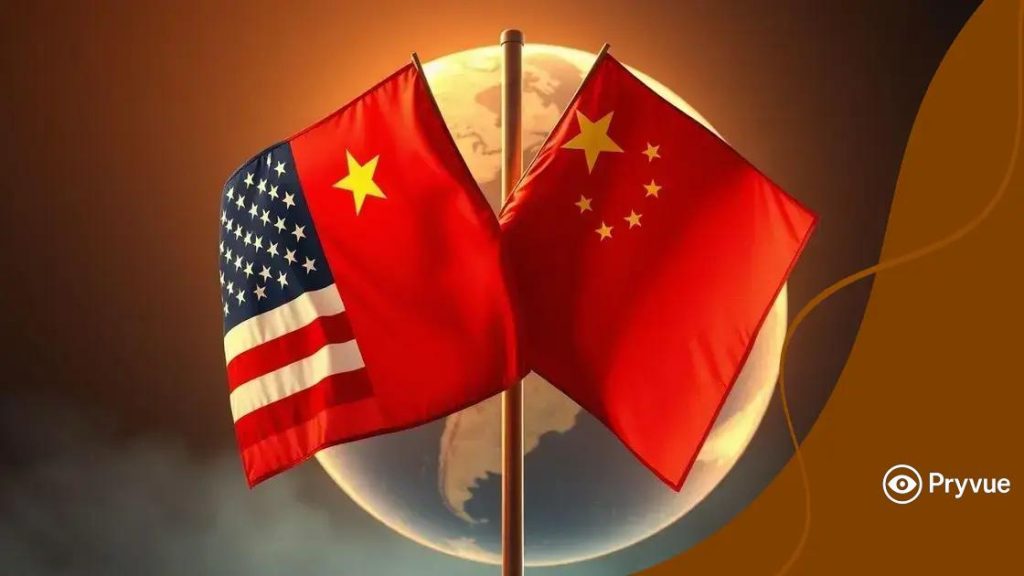2025 developments in US-China ties: what to expect

Anúncios
2025 developments in US-China ties will focus on trade agreements, political shifts, technological collaborations, environmental policies, and cultural exchanges, shaping a relationship crucial for global stability and cooperation.
2025 developments in US-China ties are on the horizon, and they promise to be pivotal for global affairs. Have you considered how these shifts could impact your life or business? Let’s dive into what we might expect.
Anúncios
Recent trade agreements and their impacts
Trade agreements play a significant role in shaping the economic landscape between nations. In the context of US-China relations, recent trade agreements are expected to influence both countries in various ways. Understanding how these agreements will unfold can provide valuable insights into future interactions.
Key impacts of recent trade agreements
These agreements often lead to shifts in tariffs and trade flows, impacting businesses and consumers alike. For instance, when tariffs are reduced, products become cheaper, encouraging more sales. This can foster a healthier trade environment. Additionally, cooperation on trade can lead to shared technological advancements.
- Increased market access for both countries.
- Job creation in specific sectors.
- Improved collaboration in technology and innovation.
- Stronger economic ties reducing political tensions.
As we explore the impacts further, it’s clear that trade agreements not only benefit the economies of the US and China but also set a precedent for how these two powers interact globally. The ripple effects of these agreements can enhance diplomatic relations and promote mutual understanding.
Anúncios
The future of US-China trade
Looking ahead, recent agreements are likely to lay the groundwork for future negotiations. Both nations are expected to focus on maintaining open lines of communication, which is critical in resolving trade disputes. Enhanced cooperation can advance sectors such as technology and green energy, reflecting mutual interests.
Overall, navigating the landscape of recent trade agreements reveals a complex interplay of challenges and opportunities. As these relationships evolve, staying informed about their implications remains essential for businesses and individuals.
Key political shifts to watch
Political shifts can greatly influence the dynamics of US-China relations. Observing these changes helps us understand future interactions and the direction of international policies.
Emerging political trends
In both countries, we see new leaders and changing agendas that can impact diplomatic ties. For instance, upcoming elections may introduce fresh policies towards trade and defense.
- Shift in leadership priorities focusing on domestic issues.
- Increased focus on climate change policies.
- Greater emphasis on technology and cybersecurity.
- Potential for renewed diplomatic dialogue.
These trends are crucial in constructing a solid understanding of how the political landscape may shift. Navigating these changes involves paying attention to party platforms and key figures emerging in both nations.
The role of international events
Events such as global summits and crises can also prompt shifts. For example, international reactions to tensions in regions like the South China Sea often reflect the political climate. US-China ties could be affected based on how each country responds to these events.
Moreover, collaborative efforts on issues such as public health or climate challenges may foster goodwill. The importance of diplomacy cannot be overstated in these contexts, especially as both countries face increasing global scrutiny.
Understanding the nuances of these key political shifts allows us to gauge potential outcomes in US-China relations. The future will rely heavily on how these changes unfold, making it essential to stay informed.
Technological collaborations on the rise

Technological collaborations are becoming increasingly important in shaping the future of US-China relations. As both nations continue to invest heavily in technology, understanding these partnerships can provide insights into their evolving relationship.
Emerging areas of collaboration
In recent years, there has been a noticeable focus on sectors like artificial intelligence, renewable energy, and telecommunications. These areas not only drive economic growth but also enhance competitiveness on the global stage.
- Joint research initiatives in AI and machine learning.
- Partnerships focused on sustainable energy solutions.
- Cooperative projects in telecommunications infrastructure.
- Development of innovative health technologies.
Each of these avenues reflects a shared interest in addressing global challenges. For example, as climate change becomes more pressing, collaborations on renewable energy can help both countries meet their goals while fostering positive diplomatic relations.
The impact of technological exchange
As technological exchanges increase, they can lead to mutual benefits. Companies in both nations can gain access to new markets and ideas, which can spark creativity and innovation. Such interactions can also create job opportunities and promote economic growth.
However, technological collaborations come with challenges as well. Concerns about cybersecurity and intellectual property remain significant. Balancing collaboration while protecting sensitive information is crucial for both governments and businesses.
Overall, understanding the landscape of technological collaborations highlights a vital aspect of US-China ties. These relationships not only impact economies but also shape the future of global technology.
Environmental policies influencing relations
Environmental policies are becoming a pivotal part of US-China relations. As global awareness of climate change grows, both nations are recognizing the importance of working together on environmental issues.
Key environmental initiatives
Recently, both the US and China have committed to various environmental initiatives aimed at reducing carbon emissions. These initiatives not only aim to combat climate change but also help boost economic cooperation.
- Joint efforts to reduce greenhouse gas emissions.
- Collaboration on renewable energy projects.
- Investment in sustainable agriculture technologies.
- Partnerships for wildlife protection and biodiversity.
By focusing on these important areas, both countries can address pressing environmental challenges while fostering better diplomatic ties. The environmental policies implemented today have the potential to transform their relationship for years to come.
The impact of climate agreements
Climate agreements between the two nations are crucial for shaping global environmental standards. For instance, commitments made during international conferences can lead to significant changes in national policies.
These agreements often encourage both nations to share technologies and resources. As a result, we see enhanced cooperation in achieving sustainability goals. Such partnerships can lead to innovative solutions that address not only local issues but also global environmental concerns.
Through focused and collaborative environmental policies, US-China relations can strengthen in ways that benefit not just the two countries but the world as a whole. The collaboration on these pressing issues highlights a growing recognition that global challenges require joint efforts.
Cultural exchanges: building bridges
Cultural exchanges between the US and China play a vital role in building understanding and respect between the two countries. These initiatives allow people to connect beyond political and economic interests.
The importance of cultural exchanges
Through programs like student exchanges, art exhibitions, and culinary festivals, both nations can appreciate each other’s customs and traditions. Such interactions foster communication and help break down stereotypes.
- Student exchange programs enhance language skills and cultural awareness.
- Art exhibits showcase diverse artistic expressions that promote dialogue.
- Culinary festivals introduce people to each other’s traditional cuisines.
- Sports exchanges encourage teamwork and shared experiences.
Cultural exchanges not only enrich individual experiences but also contribute positively to diplomatic relations. They provide a platform for citizens to engage and foster greater understanding of one another’s perspectives.
Recent initiatives and their impacts
In recent years, several successful initiatives have taken place. For instance, joint art exhibitions have displayed creative works from both countries, allowing artists to share their viewpoints. Additionally, programs that send American students to study in Chinese universities help build friendships and alliances.
These initiatives highlight the importance of mutual respect and collaboration without focusing solely on competition. Understanding different cultures can lead to more constructive dialogues in politics and business.
The ongoing commitment to cultural exchanges underlines the idea that building bridges through understanding is essential. The ability for individuals to connect personally can enhance the relationships between nations, making cultural exchanges a cornerstone of improving US-China ties.
In conclusion, the evolving relationship between the US and China is shaped significantly by various factors, including trade agreements, political shifts, technological collaborations, environmental policies, and cultural exchanges. By focusing on cooperation and mutual understanding, both nations can build stronger ties and address global challenges together. As we move forward, it’s essential to continue fostering these relationships to promote peace, collaboration, and prosperity.
FAQ – Frequently Asked Questions about US-China Relations
What are the key factors influencing US-China relations?
Key factors include trade agreements, political shifts, technological collaborations, environmental policies, and cultural exchanges.
How do trade agreements impact the relationship between the US and China?
Trade agreements reshape economic ties, promote mutual benefits, and address trade imbalances, enhancing cooperation.
Why are cultural exchanges important for US-China relations?
Cultural exchanges build understanding and respect between people, helping to break down stereotypes and promote friendship.
What role does technology play in US-China collaboration?
Technological collaborations foster innovation, create jobs, and improve competitiveness in both nations, driving economic growth.